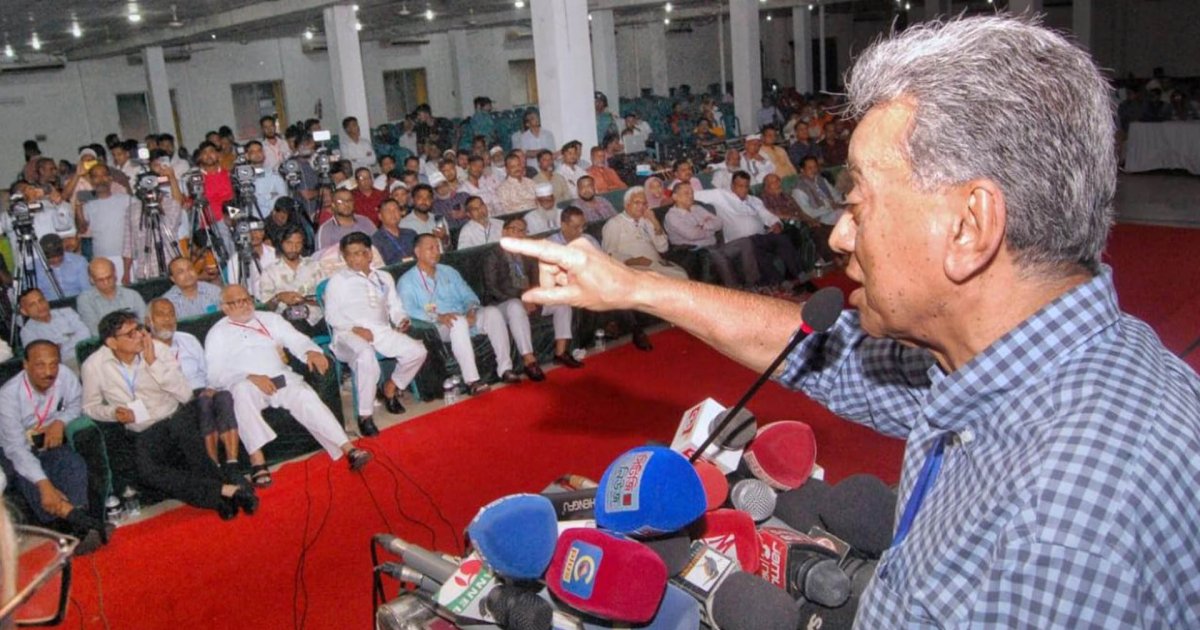Vitalik wants to make Ethereum ‘as simple as Bitcoin’ in 5 years
The post Vitalik wants to make Ethereum ‘as simple as Bitcoin’ in 5 years appeared on BitcoinEthereumNews.com. Ethereum co-founder Vitalik Buterin called for simplifying Ethereum’s base protocol, aiming to make the network more efficient, secure and accessible, drawing inspiration from Bitcoin’s minimalist design. In a blog post titled “Simplifying the L1,” published on May 3, Buterin laid out a vision to restructure Ethereum’s architecture across consensus, execution and shared components. “This post will describe how Ethereum 5 years from now can become close to as simple as Bitcoin,” Buterin wrote, arguing that simplicity is key to Ethereum’s resilience and long-term scalability. While recent upgrades like proof-of-stake (PoS) and Zero-Knowledge Succinct Non-Interactive Argument of Knowledge (zk-SNARK) integration have made Ethereum more robust, he said that technical complexity has led to bloated development cycles, higher costs and greater risks of bugs: “Historically, Ethereum has often not done this (sometimes because of my own decisions), and this has contributed to much of our excessive development expenditure, all kinds of security risk, and insularity of R&D culture, often in pursuit of benefits that have proven illusory.” Buterin praises Bitcoin for its simplicity. Source: Vitalik Buterin Related: ‘Vitalik: An Ethereum Story’ is less about crypto and more about being human Ethereum eyes “3-Slot Finality” to simplify consensus One key area of focus is Ethereum’s consensus layer. Central to this effort is the proposed “3-slot finality” model, which eliminates complex components like epochs, sync committees and validator shuffling. “The reduced number of active validators at a time means that it becomes safer to use simpler implementations of the fork choice rule,” Buterin wrote. Other proposed improvements include allowing for more straightforward fork choice rules and adopting Scalable Transparent Argument of Knowledge (STARK)-based aggregation protocols to decentralize and simplify network coordination. On the execution layer, Buterin proposed a shift from the Ethereum Virtual Machine (EVM) to a simpler, ZK-friendly virtual machine like RISC-V. This move could offer 100x performance improvements…

The post Vitalik wants to make Ethereum ‘as simple as Bitcoin’ in 5 years appeared on BitcoinEthereumNews.com.
Ethereum co-founder Vitalik Buterin called for simplifying Ethereum’s base protocol, aiming to make the network more efficient, secure and accessible, drawing inspiration from Bitcoin’s minimalist design. In a blog post titled “Simplifying the L1,” published on May 3, Buterin laid out a vision to restructure Ethereum’s architecture across consensus, execution and shared components. “This post will describe how Ethereum 5 years from now can become close to as simple as Bitcoin,” Buterin wrote, arguing that simplicity is key to Ethereum’s resilience and long-term scalability. While recent upgrades like proof-of-stake (PoS) and Zero-Knowledge Succinct Non-Interactive Argument of Knowledge (zk-SNARK) integration have made Ethereum more robust, he said that technical complexity has led to bloated development cycles, higher costs and greater risks of bugs: “Historically, Ethereum has often not done this (sometimes because of my own decisions), and this has contributed to much of our excessive development expenditure, all kinds of security risk, and insularity of R&D culture, often in pursuit of benefits that have proven illusory.” Buterin praises Bitcoin for its simplicity. Source: Vitalik Buterin Related: ‘Vitalik: An Ethereum Story’ is less about crypto and more about being human Ethereum eyes “3-Slot Finality” to simplify consensus One key area of focus is Ethereum’s consensus layer. Central to this effort is the proposed “3-slot finality” model, which eliminates complex components like epochs, sync committees and validator shuffling. “The reduced number of active validators at a time means that it becomes safer to use simpler implementations of the fork choice rule,” Buterin wrote. Other proposed improvements include allowing for more straightforward fork choice rules and adopting Scalable Transparent Argument of Knowledge (STARK)-based aggregation protocols to decentralize and simplify network coordination. On the execution layer, Buterin proposed a shift from the Ethereum Virtual Machine (EVM) to a simpler, ZK-friendly virtual machine like RISC-V. This move could offer 100x performance improvements…
What's Your Reaction?











































